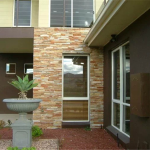The Timeless Elegance of Mediterranean Cultured Stone
Introduction Mediterranean cultured stone, also known as faux stone or manufactured stone, is a popular architectural material that has been used for centuries to enhance the beauty of buildings and structures. This versatile and durable material captures the essence of natural stone while offering unique design possibilities. In this article, we will explore the history, characteristics, benefits, and applications of Mediterranean cultured stone, as well as its role in modern architecture and design. History of Mediterranean Cultured Stone The art of using stone as a building material dates back to ancient times when civilizations such as the Greeks and Romans utilized natural stone in their architectural masterpieces. The Mediterranean region, with its rich history of art and architecture, has long been a source of inspiration for designers and builders. In more recent times, the development of cultured stone has allowed for the replication of the look and feel of natural stone at a fraction of the cost. Characteristics of Mediterranean Cultured Stone Mediterranean cultured stone is made from a blend of cement, aggregates, and iron oxide pigments that are molded and colored to resemble natural stone. This manufacturing process allows for a high degree of customization in terms of color, texture, and shape, making it a versatile material for a wide range of design applications. The finished product is lightweight, yet durable, and can be easily installed both indoors and outdoors. Benefits of Mediterranean Cultured Stone There are numerous benefits to using Mediterranean cultured stone in architectural projects. One of the main advantages is its cost-effectiveness compared to natural stone, while still providing a similar aesthetic appeal. Additionally, cultured stone is more uniform in color and texture, making it easier to match and install. veneer stone is also resistant to weathering, fading, and cracking, making it a low-maintenance option for both residential and commercial properties. Applications of Mediterranean Cultured Stone  Mediterranean cultured stone can be used in a variety of applications to enhance the beauty and character of a building. It is commonly used for exterior cladding, accent walls, fireplaces, and landscaping features. The versatility of cultured stone allows for creative design possibilities, from rustic and traditional to modern and contemporary styles. Whether used in residential homes, commercial buildings, or public spaces, Mediterranean cultured stone adds a touch of elegance and sophistication to any project. Modern Architecture and Design Trends In recent years, there has been a resurgence of interest in Mediterranean architecture and design, with a focus on incorporating traditional elements into modern spaces. Cultured stone provides a way to achieve the timeless look of natural stone while meeting the demands of contemporary design aesthetics. From sleek and minimalist facades to cozy and inviting interiors, Mediterranean cultured stone can be used to create a wide range of design styles that resonate with today's architectural trends. Conclusion Mediterranean cultured stone offers a perfect blend of beauty, durability, and versatility for architectural projects of all types. Its ability to mimic the look and feel of natural stone at a fraction of the cost makes it an attractive choice for designers, builders, and homeowners alike. Whether used to create a striking exterior facade, a cozy fireplace surround, or a charming garden wall, Mediterranean cultured stone adds a touch of elegance and sophistication to any space. Embracing this timeless material can help you achieve a classic yet contemporary look that will stand the test of time.
Mediterranean cultured stone can be used in a variety of applications to enhance the beauty and character of a building. It is commonly used for exterior cladding, accent walls, fireplaces, and landscaping features. The versatility of cultured stone allows for creative design possibilities, from rustic and traditional to modern and contemporary styles. Whether used in residential homes, commercial buildings, or public spaces, Mediterranean cultured stone adds a touch of elegance and sophistication to any project. Modern Architecture and Design Trends In recent years, there has been a resurgence of interest in Mediterranean architecture and design, with a focus on incorporating traditional elements into modern spaces. Cultured stone provides a way to achieve the timeless look of natural stone while meeting the demands of contemporary design aesthetics. From sleek and minimalist facades to cozy and inviting interiors, Mediterranean cultured stone can be used to create a wide range of design styles that resonate with today's architectural trends. Conclusion Mediterranean cultured stone offers a perfect blend of beauty, durability, and versatility for architectural projects of all types. Its ability to mimic the look and feel of natural stone at a fraction of the cost makes it an attractive choice for designers, builders, and homeowners alike. Whether used to create a striking exterior facade, a cozy fireplace surround, or a charming garden wall, Mediterranean cultured stone adds a touch of elegance and sophistication to any space. Embracing this timeless material can help you achieve a classic yet contemporary look that will stand the test of time.